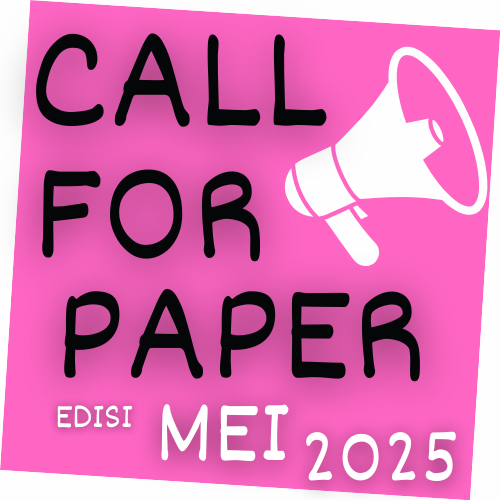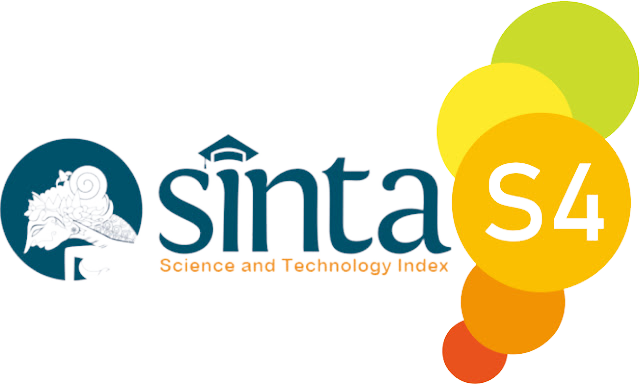Penggunaan TikTok dan YouTube sebagai Media Edukasi Pangan Kelompok Usia Remaja dan Dewasa
DOI:
https://doi.org/10.21460/servirisma.2021.11.5Keywords:
Educational media, YouTube, TikTok, Rice, Lumpia SemarangAbstract
Using social media to obtain information or learn something has become a trend in various circles of society. Educational activities using social media Tiktok and YouTube can be carried out as an activity to transfer knowledge from academics to the wider community. Knowledge about Indonesian staple food (rice) and Semarang specialties (Lumpia Semarang) needs to be conveyed to the younger generation, starting from history, culture, nutrient content, and processing methods. The purpose of this community service activity through social media is to increase the knowledge of the adolescent and adult age groups regarding the function of food, processing methods, and how to consume good and healthy food through TikTok and YouTube educational videos; create a media to socialize traditional Indonesian food as healthy food; and make learning media about food science and technology for the wider community. The results of this activity are 2 YouTube videos uploaded on the FoodTech Unika YouTube channel and 4 TikTok videos uploaded to the TikTok account @foodtechunika.
References
Bromokusumo, A. C. (2013). Peranakan Tionghoa dalam kuliner nusantara. Jakarta: PT Kompas Media Nusantara.
Gaubys, J. (2021). Most Popular Social Media Platforms [Updated March 2021]. Retrieved May 15, 2021, from https://id.oberlo.com/statistics/most-popular-social-media-platforms
Hasbullah, R., & Astika, I. W. (2019). Pemodelan Sorpsi Isotermi dan Pendugaan Umur Simpan Beras Pratanak pada Kemasan Plastik Film. Jurnal Keteknikan Pertanian, 7(1), 75-82.
IDN Research Institute. (2020). Indonesia Millennial Report 2020. Retrieved from https://cdn.idntimes.com/content-documents/Indonesia-millennial-report-2020-by-IDNResearch-Institute.pdf.
Kementerian Kesehatan Republik Indonesia. (n.d.). Data Komposisi Pangan Indonesia. Retrieved Juni 14, 2021, from https://www.panganku.org/id-ID/view
Louhenapessy, J. (2010). Sagu Harapan dan Tantangan. Jakarta: PT Bumi Aksara.
Marshall, C. (2021, April 21). Rice Cooker: The Ultimate Guide On Rice to Water Ratio. Retrieved June 14, 2021, from https://thekitchencommunity.org/rice-to-water-ratio-in-rice-cooker/
Oli, P., Ward, R., Adhikari, B., & Torley, P. (2014). Parboiled rice: understanding from a materials science approach. Journal of Food Engineering, 124, 173-183.
Rahmawan, D., Mahameruaji, J., & Alnashava, J. (2018). Potensi Youtube sebagai Media Edukasi bagi Anak Muda. . Edulib, 8(8), 81-98.
Rikumahu, J., Adam, F., & Turukay, M. (2013). Tingkat Ketergantungan Masyarakat terhadap Konsumsi Beras di Kecamatan Nusaniwe Kota Ambon. Jurnal Agrilan, 1(4), 94-105.
Rochmawati, N., Nailah, & Oktariadi, I. (2013). Penelusuran Jejak Makanan Khas Semarang Sebagai Aset Inventarisasi dan Promosi Wisata Kuliner Jawa Tengah. . DIPOIPTEKS: Jurnal Ilmiah Mahasiswa Undip, 1(1), 7-11.
Statista Research Department. (2021). Asia: Distribution of internet users by country 2020. Retrieved , from. Retrieved May 15, 2021, from https://www.statista.com/statistics/272358/distribution-ofinternet-users-in-asia-pacific-by-country/
Susilo, D., & Putranto, T. D. (2017). Indonesian youth on social media: study on content analysis. 2017 International Seminar on Social Science and Humanities Research (SSHR 2017), 94-97.
Umar, S., & Alihamsyah, T. (2014). Pembersihan dan Pengeringan Padi.
Utami, A., Nujiana, S., & Hidayat, D. (2021). Aplikasi Tiktok Menjadi Media Hiburan Bagi Masyarakat dan Memunculkan Dampak di tengah Pandemi Covid-19. MEDIALOG: Jurnal Ilmu Komunikasi, 4(1), 40-47.
Whattocooktoday. (2021, May 31). How To Cook Whole Grain Red Rice. Retrieved June 14, 2021, from https://whattocooktoday.com/how-to-cook-red-rice.html
Whelan, C. (2018, September 29). Brown Rice vs. White Rice: Nutrient Comparison. Retrieved June 14, 2021, from https://www.healthline.com/health/food-nutrition/brown-rice-vs-whiterice#rice-and-diabetes
Downloads
Published
How to Cite
Issue
Section
License
Copyright (c) 2021 Meiliana, Rika Pratiwi, Mellia Harumi

This work is licensed under a Creative Commons Attribution-NonCommercial-NoDerivatives 4.0 International License.
Authors who publish articles in SERVIRISMA agree on the following rules:
1. The author grants non exclusive royalty free rights, and is willing to publish articles online and complete (full access). With such rights SERVIRISMA reserves the right to save, transfers, manages in various forms, maintains and publishes articles while keeping the author's name as the copyright owner.
2. Each author contained in the article has contributed fully to the substance and intellectual, and is accountable to the public. If in the future there is a copyright infringement notification then this will be responsibility of the author, not SERVIRISMA .









